King's Quest: Quest for the Crown (AGI)
Released: 1987
Published by: Sierra On-Line, Inc.
Developed by: Sierra On-Line, Inc.
Credits: Roberta Williams, Arthur Abraham, Ken MacNeill, Doug MacNeill, Greg Rowland, Charles Tingley
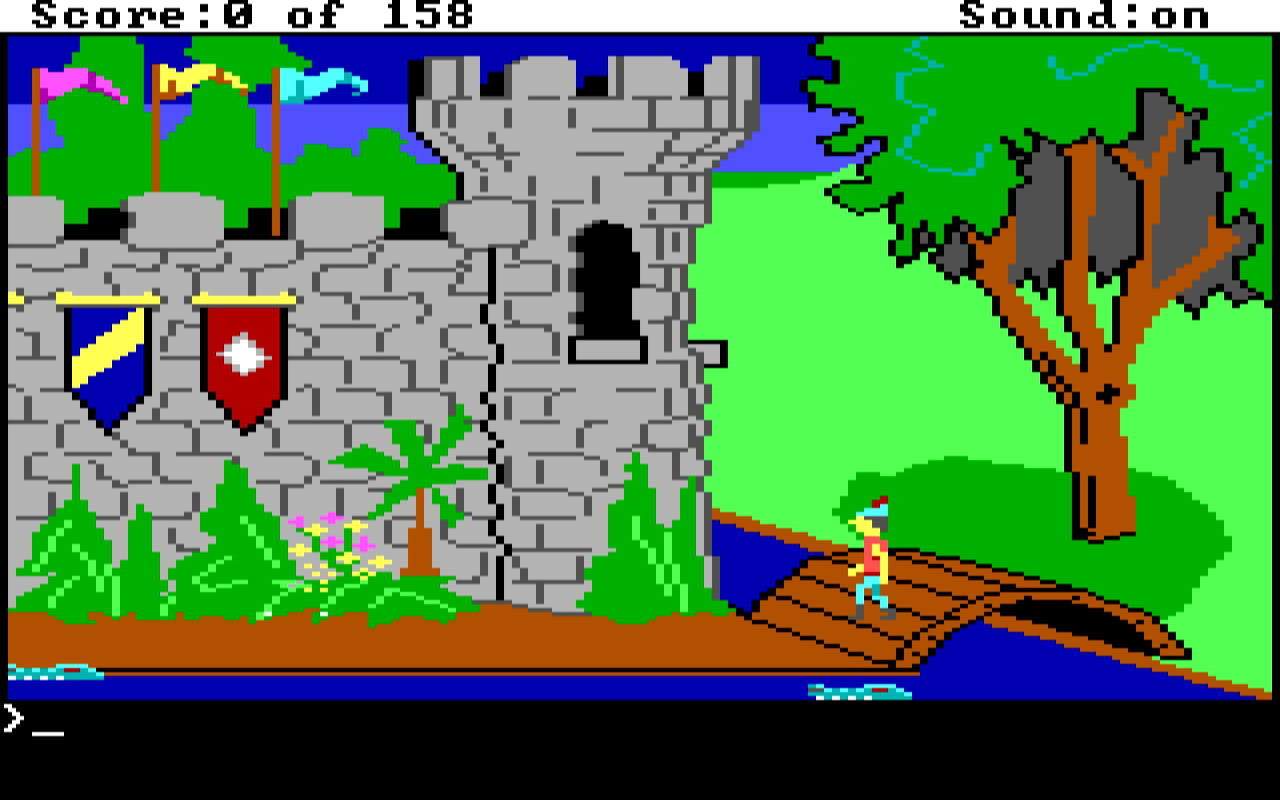

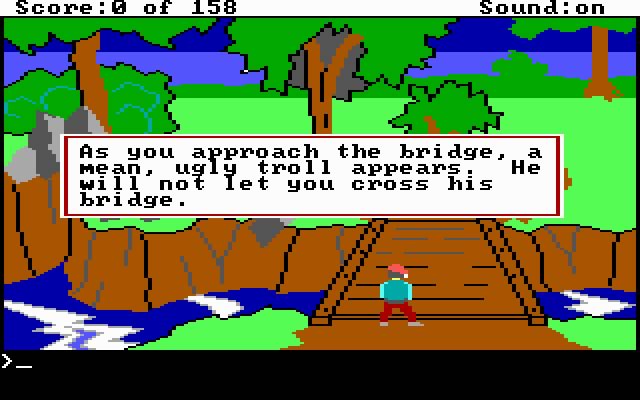
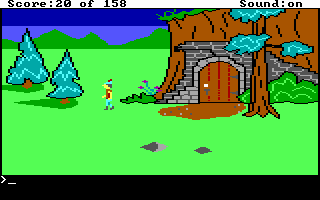
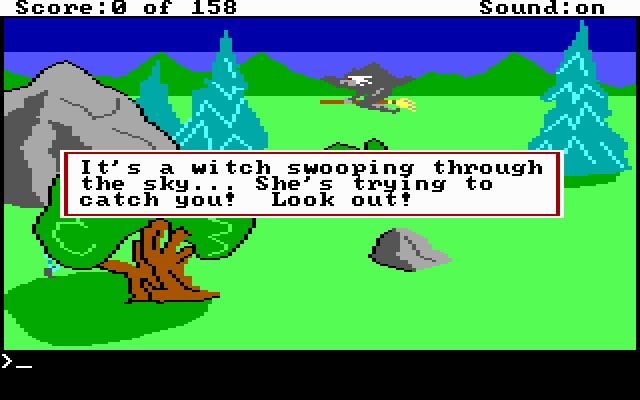
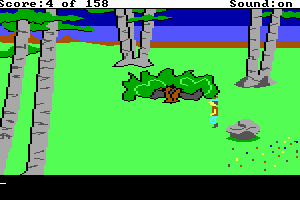
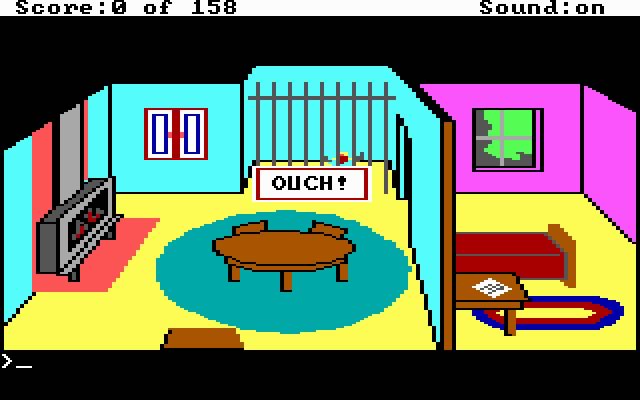
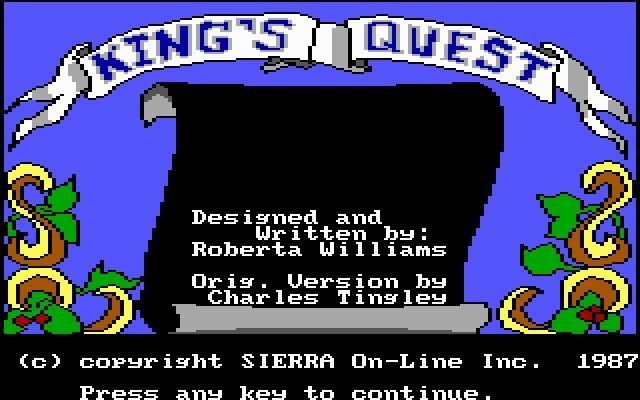


EGA graphics
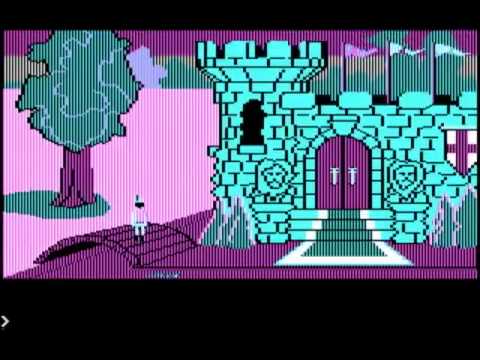
CGA Composite
mode
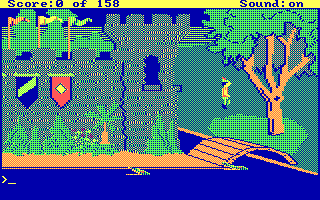
CGA RGB
mode
System Requirements
| System Requirements | 8088 or 8086 and compatibles. 256K RAM required. DOS 2.11 or later. Hercules monochrome/CGA/EGA graphics supported. Audio support for PC speaker or Tandy only. *An unofficial "experimental" patch allows 3-voice music to be played from an MPU-401 interface* |
|---|---|
| Original Media | Two 5.25" 360 KB floppy disks or one 3.5" 720 KB floppy disk |
| Installed Size | - |
Did You Know?
The game was created by a team of 7: Roberta Williams was the writer/designer and project leader, 3 programmers (Arthur Abraham, Charles Tingley and Ken MacNeill), and 3 graphic artists (Greg Rowland, Doug MacNeill, and one other). The MacNeills' went on to create Gold Rush and Doug also worked on the graphics for King's Quest II, while Greg Rowland was a programmer who worked on Police Quest: In Pursuit of the Death Angel.Originally released in partnership with IBM for their new PCjr machine in 1984, King's Quest: Quest for the Crown came to the IBM PC three years later, after a release on the Apple II also.
Sir Graham is a brave knight who is sent on a quest to retrieve three treasures that were stolen by deception and stealth: a shield that protects its bearer from invaders, a mirror that foretells the future, and a treasure chest that is forever filled with gold. If Sir Graham takes these treasures back to the royal castle, then the ailing King Edward the Benevolent of Daventry will hand over the crown. During his travels, Graham will meet characters that will either help or hinder him.
King's Quest 1: Quest for the Crown was re-released in 1990 to work with Sierra's new SCI interpreter (SCI0), featuring higher resolution graphics and better sound card support.
From where can it be run?
From the original floppy disk only.
Game Audio/Video
-
Copy Protection
-
How to Setup
The game does not come with a setup program like later Sierra titles. All versions check the BIOS for an ID string that matches an IBM PCjr or Tandy 1000 and will initialise those systems' 3-voice PCG sound data and also load those graphics drivers. However, there are some command-line options to force the graphics mode. Simply run SIERRA.COM with:
- -c Forces CGA Composite colour mode
- -r Forces CGA RGB colour mode
- -h Forces Hercules (HGC) mono mode for TTL monitors
- -e Forces EGA mode
- -t Forces Tandy 1000 graphics and/or sound
- -p Forces "PC" mode (assumed to tell it you're running a PC not a PCjr or Tandy)
- -s An unknown flag - not sure what this does
The game doesn't require any extended memory (XMS) or expanded memory (EMS) drivers to be loaded.
Problems
Issue:
Cause:
Resolution:
To Quit the Game
Simply type the word "QUIT" and hit Enter. Then either hit Enter again to confirm or ESC to cancel.
Supporting Documents
Here are the original documents that came with the game:
And here are some aftermarket links:
Save Games
The location of save game files is entirely up to you! When you type the word "SAVE" you will be prompted for a directory where you wish the save game file to be stored. By default this will be the same directory in which the executable file was run.
Once you've chosen the location you are shown 12 'slots' in which save games can be stored. Any slots that have a save game already stored will display their description. Once the slot has been chosen, you are prompted to give a description for the save game. Once completed, the save game will be stored in a file called kqsg.x where x is the slot number from 1 to 12.
This is actually a great way of storing save games, as you are not limited to 12 slots - if you need more you can create a directory anywhere and use that to store a further 12 save games.
Versions of the game known to exist
| Version | Date | Comments |
|---|---|---|
| 2.0F | 1987 | 5.25" DS/DD floppy disk release, interpreter version 2.425 |
| 2.0F | 1987 | 5.25" DS/DD floppy disk release, interpreter version 2.917 |
| 2.0F | 1987 | 3.5" DS/DD floppy disk release, interpreter version 2.917 |
Original Floppy Disk Contents
The floppy disks have a volume label of "KQ". Here are each disk's contents:
Disk 1 of 1 (3.5" 720 KB DS/DD):
Directory of A:\ |
|
Disk 1 of 2 (5.25" 360 KB DS/DD): Directory of A:\ |
 |
Disk 2 of 2 (5.25" 360 KB DS/DD): Directory of A:\ |
 |
